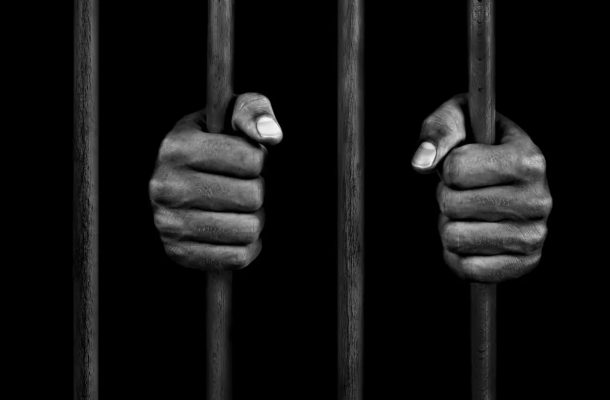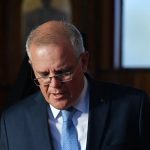Closing the gap – or widening the gulf?

In 2008, when Kevin Rudd announced the Closing the Gap strategy, it sounded like a positive and practical way to flesh out the symbolic apology to the Stolen Generations, the idea being that when Aboriginal health and wealth achieved parity with the rest of Australia, the gap would be closed and a national shame healed.
But 10 years on, a review of the strategy by the non-government Closing the Gap campaign found that only one of its seven targets was on track (halving Year 12 attainment by 2020).
Other targets included halving the gap in child mortality by 2018, closing the gap in life expectancy, halving the gap in reading and numeracy, halving the gap in employment, and having 95 per cent of Indigenous four-year-olds enrolled in early childhood education by 2025.
In November, the Australian Medical Association said the health strategy had all but unravelled.
Many reasons have been put forward for the failure, but Monash law lecturer Stephen Gray argues that Closing the Gap contained a serious omission: the targets didn’t include reducing the number of Aborigines in prison.
The intervention
The reasons are partly connected to the Northern Territory National Emergency Response, colloquially known as “the intervention”.
The intervention was introduced before the 2007 federal election that ended John Howard’s 11-year reign as prime minister. Its purpose was to tackle allegations of widespread child sexual abuse and neglect in Northern Territory Aboriginal communities that came to light after the royal commission report, Little Children Are Sacred. (As it happens, only two of the report’s 97 recommendations were implemented in the Northern Territory.
In the intervention’s first year, 600 soldiers and detachments were deployed. The military’s role ended in October 2008.
Dr Gray has been researching “the gap” in Indigenous human rights in the Northern Territory since 2014, producing the first report for the Castan Centre for Human Rights in February 2016.
He argued then that Aboriginal human rights in the Northern Territory were compromised by the intervention – and says they’re still affected to this day.
He believes that the story of how Aborigines are treated under the law cannot be separated from the grim statistics detailing their lower life expectancy and higher rates of disease, unemployment and illiteracy.
When Dr Gray began his research, one of his questions was why indigenous incarceration rates were not included in the Closing the Gap targets. “That was a genuine question,” he says. “Why?”
Indigenous incarceration rates are “10 or 12 times as high” as the rest of the population, depending on where you live, he says.
Australia-wide, the figure remains “roughly equivalent” to what it was when the Royal Commission into Aboriginal Deaths in Custody was held in 1991. A bottom-line finding of the ’91 royal commission was that more Aborigines die in prison because more Aborigines are imprisoned.
“In the Northern Territory, where 30 per cent of the population is Aboriginal, about 80 to 90 per cent of the prison population is Aboriginal, and in juvenile detention it’s 96 to 100 per cent,” Dr Gray says. (He points out that in the 27 years since the Royal Commission into Aboriginal Deaths in Custody was held, the bulk of its 339 recommendations have not been implemented.)
“It seems obvious, you know – if life expectancy is a target, and Year 12 retention rates are a target, why shouldn’t incarceration rates be a target?” he asks. “We should at least aim to try and reduce Indigenous incarceration to a level that was no greater than anybody else.”
“It seems obvious, you know – if life expectancy is a target, and Year 12 retention rates are a target, why shouldn’t incarceration rates be a target?”
So why weren’t incarceration rates included?
“Officially, the reason was this is an area of state responsibility, not Commonwealth responsibility, which seemed inadequate given that health and education are also state responsibilities. So, at a guess, it may have had something to do with the idea that if keeping Aboriginal people out of jail is a high priority, the message might get out in some quarters that the government is not concerned enough with protecting victims of crime.”
He says in the intervention’s early years, more police stations were built. The idea was to “crack down on men bashing women, or sexual abuse, particularly violence”.
“But women were saying this wasn’t the right way to go. It was an imposed measure. A lot of money was being spent on building these police stations, hundreds of millions of dollars, but it wasn’t what the community was asking for, including the women who were suffering from the violence.
“They said they would rather have a domestic violence shelter than a big shiny police station and extra jail cells to put the men in.”
Part of the impetus behind the intervention was that “ideas of human rights and self-determination weren’t getting the job done”, Dr Gray says.
“You have to focus on practical, immediate changes. So that was partly what was behind our report. We wanted to look at: is there evidence that intervention has had any effect, or a better effect than arguably less intrusive policies elsewhere in Australia?
“How is the Northern Territory tracking on health, education, those sorts of measures, compared to elsewhere in Australia?”
Measures taken
The intervention included deploying extra police to affected communities; new restrictions on alcohol; compulsorily acquiring townships held under the title provisions of the Native Title Act; removing customary law and cultural practice considerations from bail applications and criminal sentencing; suspending the permit system controlling access to Aboriginal communities; abolishing community development employment projects; and quarantining a proportion of welfare benefits in designated communities and all benefits to those judged to have neglected their children.
The last measure meant Aborigines on benefits received a proportion of them on a card so that the money could not be spent on alcohol, gambling or cigarettes, for example.
“Its use stems from the idea that Aboriginal people are not spending money in a responsible way,” he says. The card would force them to buy healthy provisions for their families.
“The card was a particular colour so it was identifiable to people in the shops who would say, ‘Don’t you buy that cut of steak, you buy that cheap one, it’s for you’ – that kind of thing. It was stigmatising. People felt that it was a shameful thing, which is only natural. Anybody would feel like that, so there was passive resistance. People would lose the cards. There is a higher rate of loss among Aboriginal people who are subject to the cards than among others.”
The Rudd and Gillard governments chose to continue most of the intervention policies, although the suspension of the Racial Discrimination Act in the Northern Territory ended in 2010. The program, now known as Stronger Futures, was retained by the Abbott/Turnbull governments.
Commission held
Since the first Closing the Gap on Indigenous Rights report was published, the Royal Commission into the Protection and Detention of Children in the Northern Territory was held after shocking images of a child hooded, shackled and strapped to a chair in the Don Dale Juvenile Detention Centre were broadcast on Four Corners in July 2016.
The idea that government intervention was necessary in the Northern Territory because little children are sacred was cruelly exposed.
Asked what he would do to improve human rights and incarceration rates in the Northern Territory, Dr Gray says: “It’s a difficult question, but I would certainly be putting the views of the people concerned front and centre.
“Speak to the Indigenous advocates, speak to lawyers – especially Indigenous lawyers who appear in the courts regularly. Speak to community leaders about what they want for their communities, I think that’s a place to start.
“It’s not going to give you all of the answers, because these are things that have been going on for generations. Aboriginal people can’t solve them on their own, but you have to start with bottom-up solutions that are driven by the communities concerned, not-top down, imposed measures.”
The Council of Australian Governments (COAG) recently discussed extending the program in its December meeting and announced Indigenous people would have more say in the future.
This article was published by Lens.
Open Forum is a policy discussion website produced by Global Access Partners – Australia’s Institute for Active Policy. We welcome contributions and invite you to submit a blog to the editor and follow us on Twitter, Facebook, Linkedin and Mastadon.












